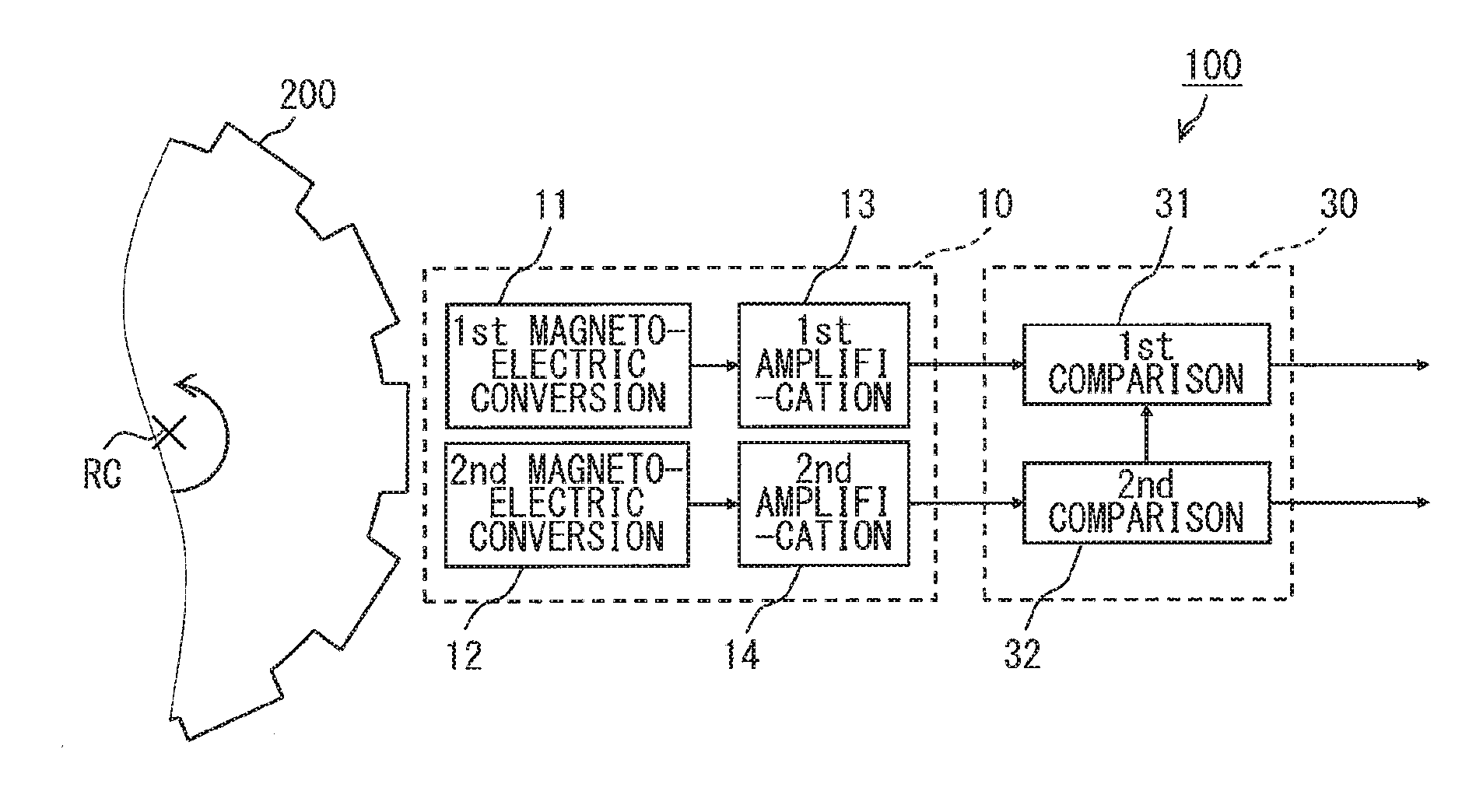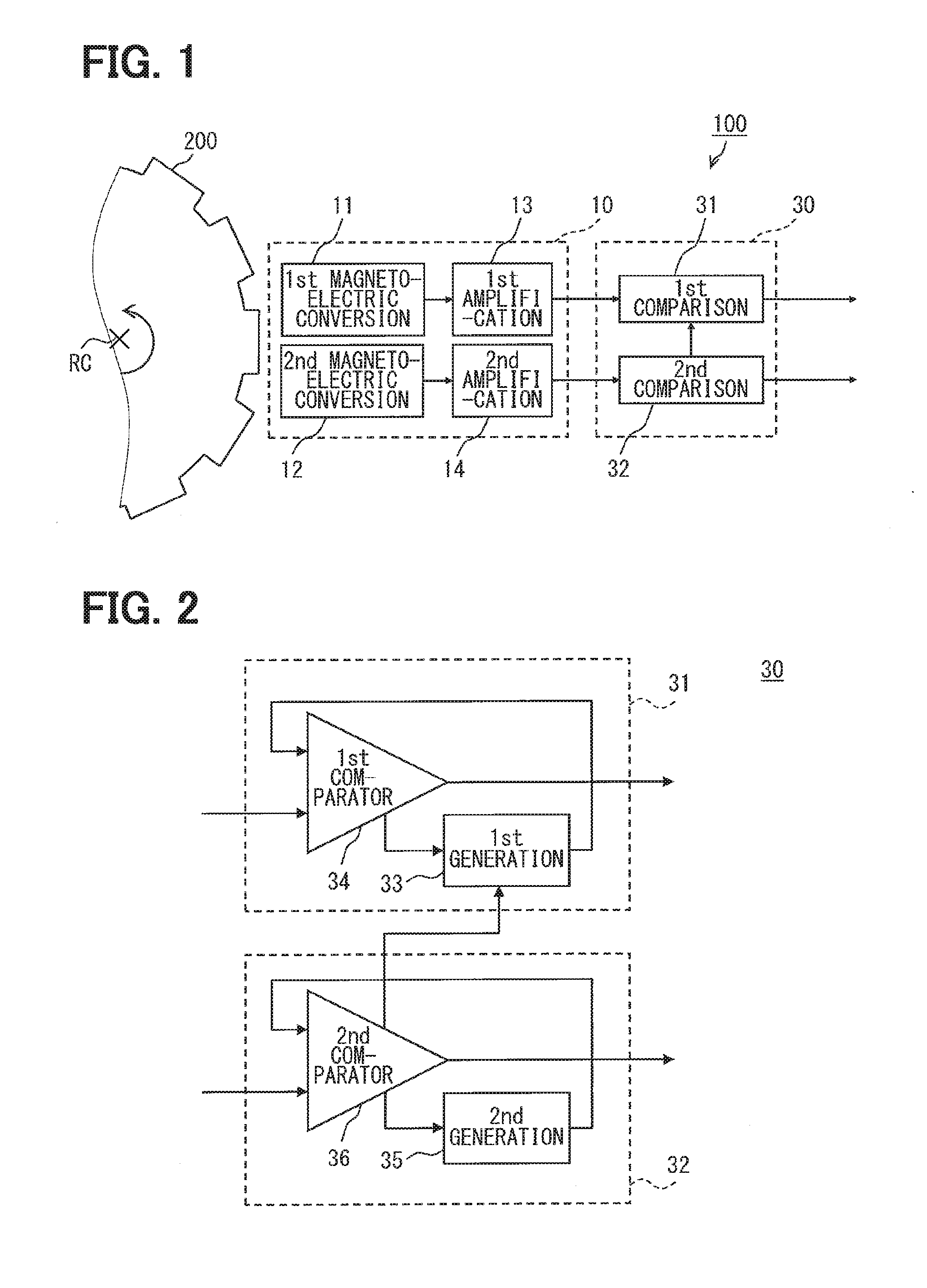Rotation sensor
a technology of rotation sensor and rotor, which is applied in the direction of speed/acceleration/shock measurement, measurement devices, instruments, etc., can solve the problems of not being able to control the rotation state of the rotator with high accuracy
- Summary
- Abstract
- Description
- Claims
- Application Information
AI Technical Summary
Benefits of technology
Problems solved by technology
Method used
Image
Examples
first embodiment
[0026]A rotation sensor according to this embodiment will be described with reference to FIGS. 1 to 4. In a timing chart of FIG. 4, the vertical axis represents voltage, and the horizontal axis represents time. Hereinafter, a direction passing through a rotation center RC of the rotator 200 in one direction is an axial direction, and a direction around the axial direction is a circumferential direction.
[0027]The rotation sensor 100 detects the rotation state of the rotator 200 based on the change of magnetic flux whose direction changes periodically with the rotation of the rotator 200. As shown in FIG. 1, the rotation sensor 100 has a magnetoelectric conversion unit 10 for converting the change of magnetic flux whose direction changes periodically into an electric signal and a processing unit 30 for processing the electric signal of the magnetoelectric conversion unit 10.
[0028]The magnetoelectric conversion unit 10 has a first magnetoelectric conversion unit 11 and a second magneto...
second embodiment
[0060]Next, a second embodiment of the present disclosure will be described with reference to FIGS. 6 to 9. A rotation sensor according to the second embodiment has a lot in common with that of the above embodiment. Accordingly, hereinafter, common parts will not be described, and different parts will be intensively described. Further, hereinafter, the same elements as in the above embodiment are denoted by the same reference numerals.
[0061]Unlike the rotation sensor 100 according to the first embodiment, the rotation sensor 100 according to this embodiment has a combination unit 60 in addition to the magnetoelectric conversion unit 10 and the processing unit 30, as shown in FIG. 6. The magnetoelectric conversion unit 10 and the processing unit 30 have slightly different configurations from those of the rotation sensor 100 according to the first embodiment. Accordingly, the difference between the configurations and the combination unit 60 as a new constituent element will be sequent...
PUM
 Login to View More
Login to View More Abstract
Description
Claims
Application Information
 Login to View More
Login to View More - R&D
- Intellectual Property
- Life Sciences
- Materials
- Tech Scout
- Unparalleled Data Quality
- Higher Quality Content
- 60% Fewer Hallucinations
Browse by: Latest US Patents, China's latest patents, Technical Efficacy Thesaurus, Application Domain, Technology Topic, Popular Technical Reports.
© 2025 PatSnap. All rights reserved.Legal|Privacy policy|Modern Slavery Act Transparency Statement|Sitemap|About US| Contact US: help@patsnap.com



